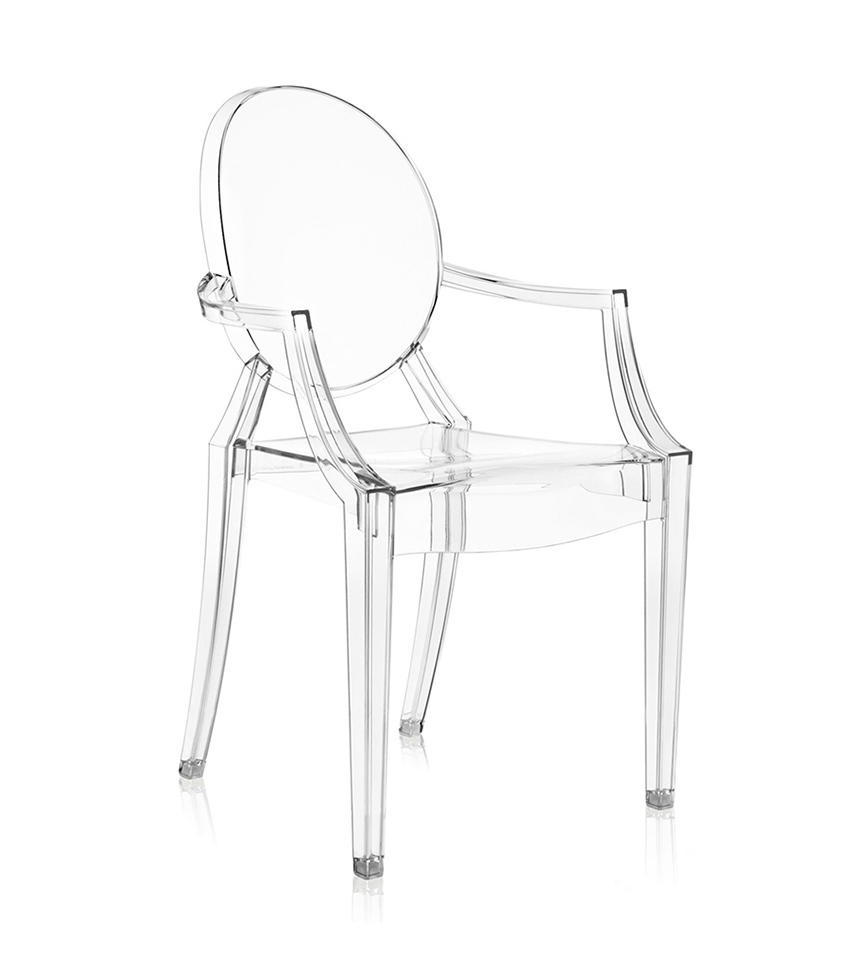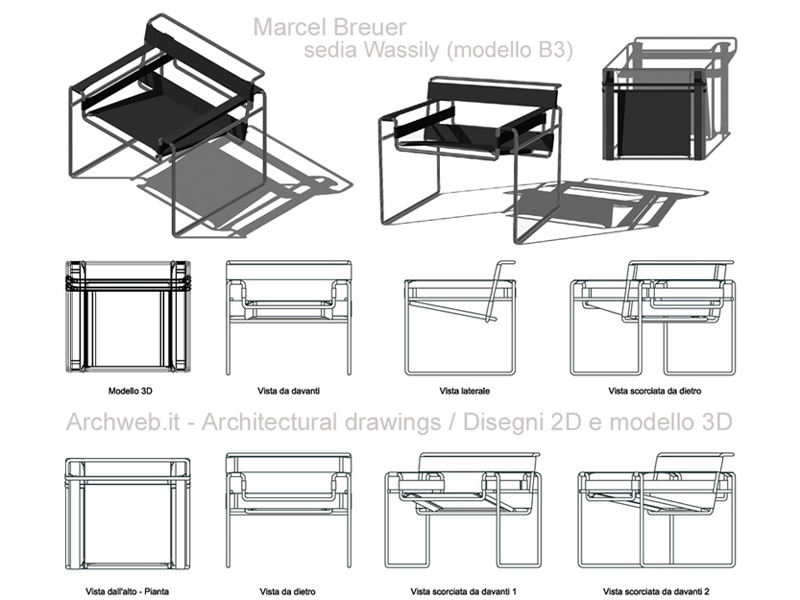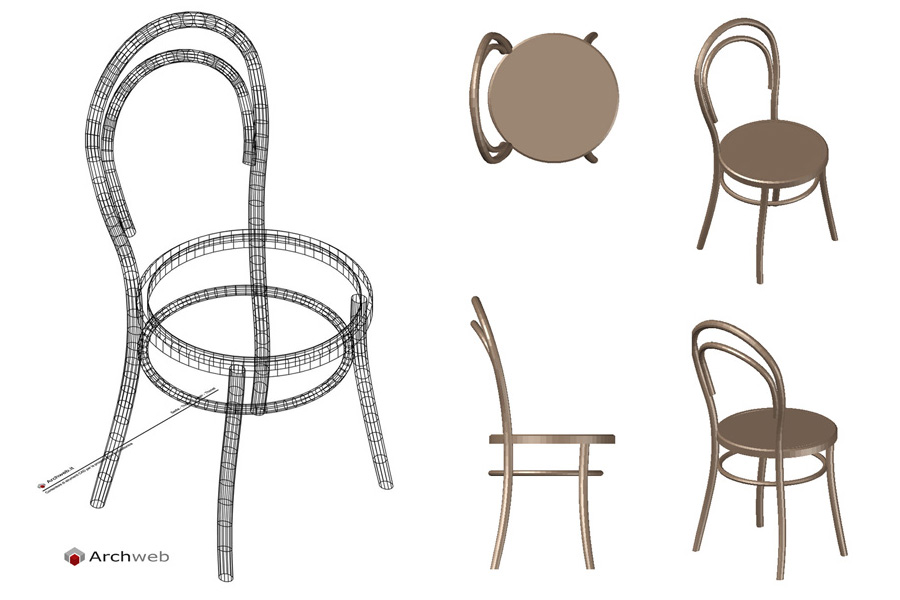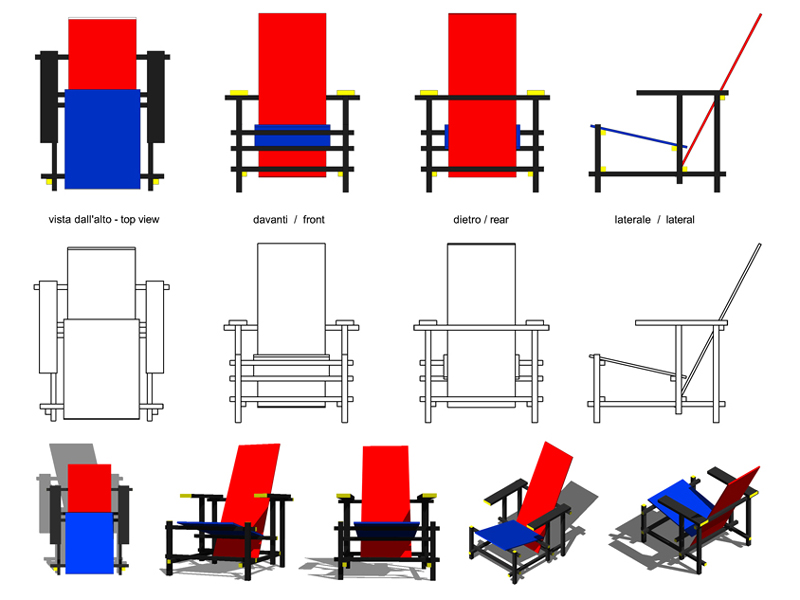The design chairs
Combination of functionality and aesthetics
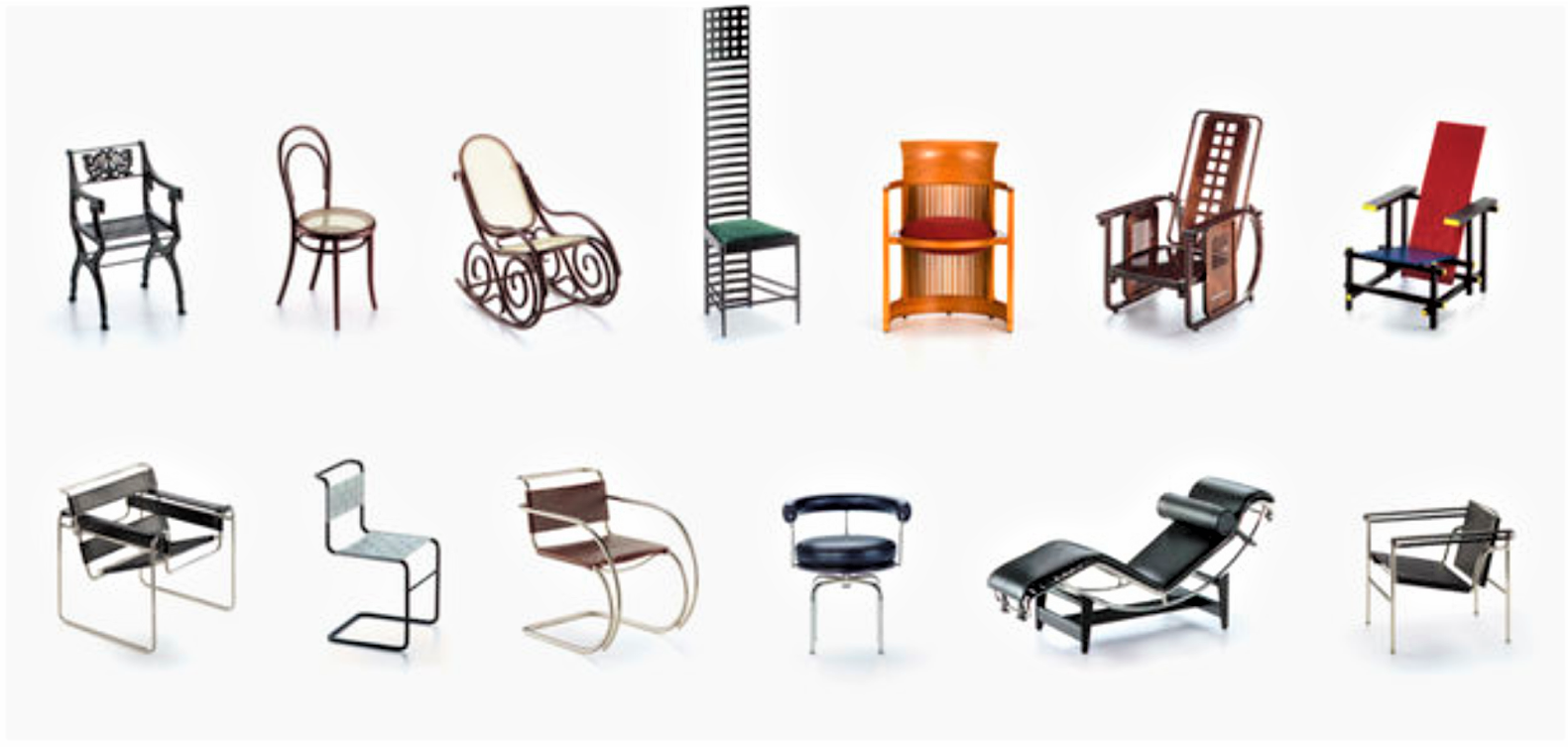
They undoubtedly represent the most popular furniture of all, we find them indoors and outdoors, in residences, workplaces, hospitality and service facilities: we are talking about design chairs. The peculiarity that distinguishes them also constitutes their main function: to guarantee comfortable seating for one person only. The structure of which they are composed is made up of a horizontal seat, four vertical support elements, a backrest and sometimes two armrests. Depending on the type, model and style of the chair, these elements may vary in number, shape and materials. About the latter, the most used are wood, aluminum and plastic fibers, although today, thanks to innovative techniques and increasing versatility, it is possible to find new and unexpected ones.
Contents
- The development of the chair in history
- The ergonomic design of the chair
- The chair and its variations
- The chairs: timeless icons
Over time, the chair becomes a representative element for the style of architects and designers who, through a careful study of human proportions, make it a perfect combination of functionality and aesthetics. Some of the numerous models introduced by the artistic movements that have followed one another throughout history become design icons, sometimes unique pieces capable of giving strong personality to the environments and at the same time guaranteeing the right comfort.
The development of the chair in history
Originally, the chairs were intended for the wealthiest classes of society and the single ones were used by princes and popes, to symbolize the power held by them. The first certain evidence of the presence of seats dates back to the time of the ancient Egyptians, when ebony seats, often decorated with ivory, with legs that reproduced animal shapes, began to spread.
Subsequently, the Roman civilization introduced the so-called “sella curulis”, a seat in the shape of an x, foldable and transportable, a symbol of the judicial power and for this reason used purely by magistrates and belonging to high public offices. In the medieval period, on the other hand, single sessions, intended for kings and members of the clergy, were differentiated from collective ones, intended for the people. While the former were imposing, solid and richly decorated, the latter consisted of a horizontal axis supported by two vertical elements but lacked a backrest. For this reason, they were uncomfortable and not very pleasant from an aesthetic point of view.
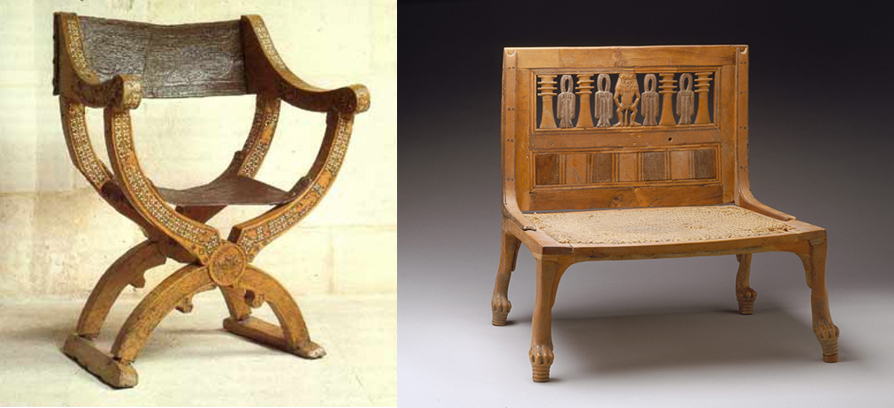
Right photo: seat dating back to the Egyptian civilization, 15th century BC. – Metropolitan Museum
It was only from the Renaissance period that the chair became a commonly used piece of furniture, widespread even in the most popular homes. There remains a clear distinction between these chairs and those destined for the wealthiest segments of the population, equipped with a backrest made up of Ionic columns. By becoming a piece of furniture for everyday use, the chair assumes great importance and many designers try their hand at experimentations and original solutions.
Industrial design sees the chair as an object of common use with high potential: this is how different types make their way, characterized by various materials and shapes. From this moment on, in some cases, the seats become real icons, objects that bear the signature of architects and designers and that become progressively recognizable thanks to the strong aesthetic characteristics that characterize them.
To view and download the dwg of some vintage chairs click here
The ergonomic design of the chair
In order to achieve the purpose for which the chairs are designed, it is necessary to study and respect some basic rules for obtaining comfortable seats. One of the principles underlying the design process of this type of furniture is represented by ergonomics. In order to achieve the purpose for which the chairs are designed, it is necessary to study and respect some basic rules for obtaining comfortable seats.
One of the principles underlying the design process of this type of furniture is represented by ergonomics. The latter is the science that investigates the relationship between the human body and the tools at the service of man himself and has as its ultimate goal the user’s comfort and psycho-physical well-being. In summary, furniture designed according to the rules of ergonomics must ensure comfort for the one who uses it, without inducing unpleasant inconveniences and unpleasant health effects caused by poor use. In these terms, the chair must be made up of components studied on the size and needs of the body of individuals, even very different from each other. For this reason, the measurements of the seat, back and any armrests must be modeled on proportions belonging to different individuals.
It is therefore essential that the interior design sector is shaped on the characteristics of the target that lives in the specific geographical areas to be served. However, despite these important differences, there are some parameters that allow us to understand whether a chair is ergonomic or not. The common goal is to ensure correct posture when in a sitting position: the sole of the foot must rest completely on the ground, the calf must remain vertical and orthogonal to the foot, while the thigh, in a horizontal position, must form a right angle with the torso which must maintain the erect position. It is important that the back is straight but that you can also change position as needed and that the neck remains relaxed in order to avoid feelings of discomfort.
In addition, it is good to clarify how the physical characteristics of the chair also change depending on the function of the chair: a seat used to have a meal at the table will be different from one used to work or to relax in a relaxation area of the house. For example, in the case of an office chair it will be essential to be able to adjust the height of the seat and the inclination of the backrest and to be able to move thanks to the equipment of special wheels.
On the other hand, in the case of seats inserted in a living environment, it will be necessary to ensure comfort when having lunch or dinner, thanks to backrests capable of maintaining the upright position. Finally, the chairs intended for reading corners and relaxation areas must be equipped with enveloping seats, useful for relaxing during free time. Regardless of the type of session, what really matters is meeting the needs of the end user by ensuring constant psycho-physical well-being.
It is therefore clear that industrial design has a specific mission: that of studying and designing furnishings and objects for everyday use, in order to improve the quality of life of those who use it.
The chair and its variations
The evolution of chairs has always been linked to the changing lifestyles and needs that have influenced the way of living spaces. For this reason, the countless experiments have generated differentiated products designed on specific needs. Since the Industrial Revolution, the production of chairs has increased rapidly and numerous completely innovative solutions have been placed on the market.
These are chairs designed to meet new needs and to amaze with unusual elements.
Among the different types that spread in this period we can include the rocking chairs which, thanks to the curved components at the base, guarantee a pleasant oscillating motion to those who are seated. Even the chair deckchair soon becomes a classic for open spaces such as balconies and terraces but above all a real must have on the beach together with sun loungers. Well known, this type of chair guarantees different positions for the user, in fact it is possible to adjust the inclination of the backrest and consequently switch from sitting to lying position. The plus value consists in the possibility to close it and transport it easily thanks to the lightness of its structure.
Another type of seat widely used in contexts other than those mentioned is the cantilever chair, original for its “cantilever” configuration. The peculiarity consists in the vertical elements folded at the base and on the seat which are made up of a single continuous tubular element. Having become a symbol for interior design in the 1900s, this chair is very popular in service facilities, offices, hotels but also in residences.
A chair designed on the needs of flexible users, who love adventure and comfort, is represented by Tripolina, particular seat consisting of a fully resealable wooden or metal frame. The seat and backrest are represented by a single fabric element, light but at the same time robust and welcoming.
Finally, among the most popular chairs ever, it is possible to mention the monobloc chair in pvc, used in any type of environment, especially outdoors, comfortable and with a somewhat spartan appearance.
Stools and stools can be considered a variant of the classic chair, often without backrests, have a higher height and are used in modern or industrial style environments. Beyond this classification, the chairs on the market are innumerable and are distinguished by workmanship, materials, colors and finishes.
The chairs: timeless icons
The chair has always represented a piece of furniture at the center of the debate between world-famous designers and artists: a sort of pivotal element around which style, functionality, originality and comfort revolve. The artistic currents that have followed one another over the course of history have contributed to the determination of the stylistic connotations and the characterizing elements that have made the chairs true icons of style. Sometimes provocative objects, sometimes innovative and multifunctional solutions, the chairs have been able to exploit the hidden potential of materials and shapes, contributing to the development of the interior design sector. In fact, between the 70s and 80s of the twentieth century, with the advent of the Industrial Revolution, there is a great ferment and production speeds up its pace and multiplies the products marketed.
Below we will mention some of the most famous chairs in the history of world design, highlighting the particularities that have made them icons known by all.
Michael Thonet – Model no 14 – 1859
One of the most famous chairs designed by Michael Thonet, made using the steam bending technique. The result is a light but very robust seat, with a timeless style and undisputed elegancen which soon became an icon within the nineteenth-century Viennese cafes. The innovative aspect concerned the possibility of breaking down each piece of furniture into six pieces that could be assembled and transported with extreme ease.
To view and download the 3D model click here
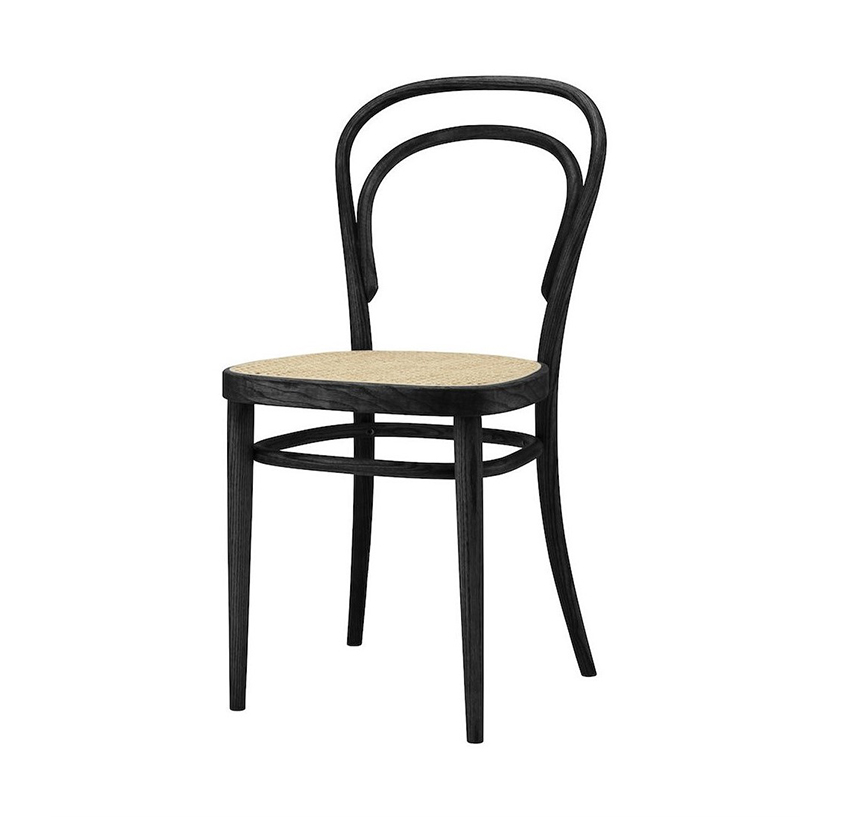
Charles Rennie Mackintosh – Hill House Chair – 1902-1904
Made by Rennie Mackintosh to furnish the interiors of the Hill House in Scotland, this chair has become one of the most famous works of its author. Each piece of furniture in the house is conceived and designed as a part of an organic and harmonious whole. Specifically, the elements of the seat refer to Japanese design and abstract geometries, with the aim of recreating a seat that is a work of art more than just a piece of furniture. The characterizing element of the chair is represented by the narrow and very high backrest, composed of a series of horizontal strips surmounted by a square grid. The result is an aesthetically very original chair but also functional thanks to the skilful use of geometry and shapes.
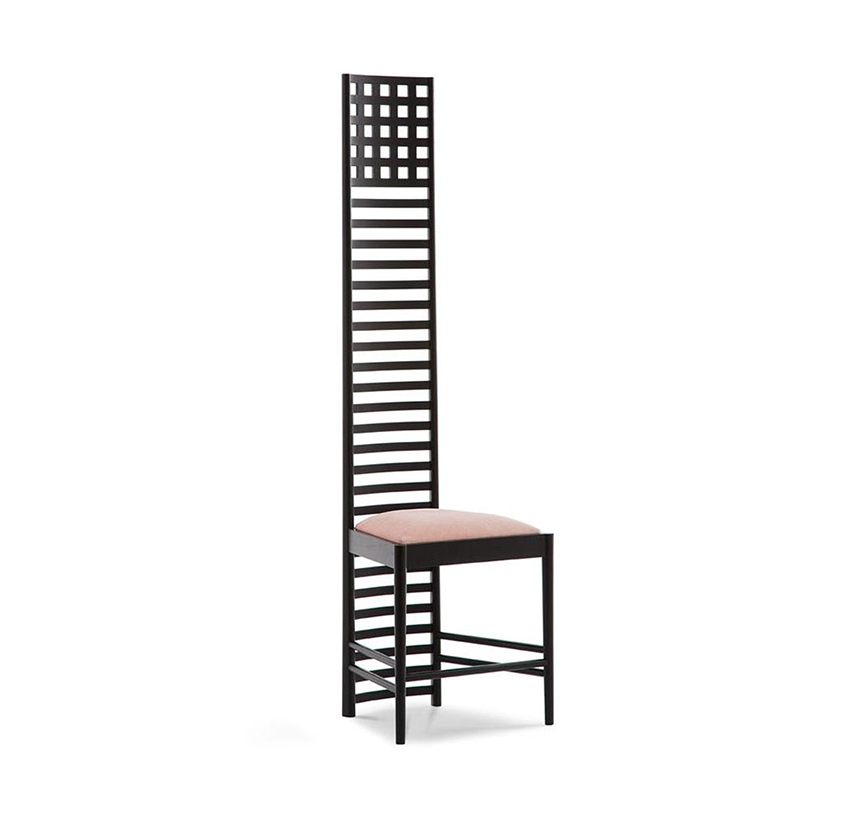
Gerrit Thomas Rietveld – Red-blue chair – 1918
Symbol of De Stijl, the chair is the three-dimensional transposition of a Mondrian work. The structure consists of a horizontal shelf for the seat, a vertical shelf for the back and a series of strips connected to each other by means of quadrangular section moldings. The joint seems to leave one element independent of the other and the surfaces are thus coplanar but detached. The primary colors of yellow, red and blue characterize the main surfaces, while the frame is entirely lacquered in black. The chair was conceived as a seat for reading and has become one of the major symbols of Dutch Neoplasticism. Simple and linear, this famous piece of furniture follows the flat figures and square lines typical of the geometric discipline.
To learn more, see and download the dwg drawing click here
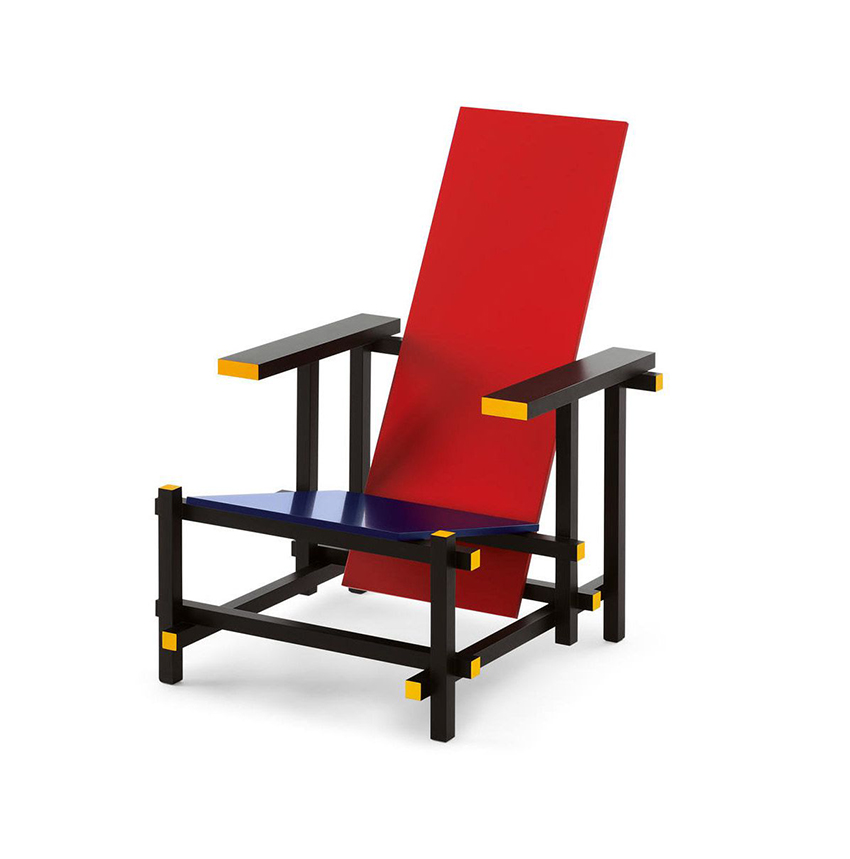
Marcel Breuer – Wassilly – 1925
Emblem of the Roaring Twenties, the Wassilly chair by Marcel Breuer represents a combination of the dictates of the Bauhaus and the design experiments of the times. In fact, the peculiarity of this famous work is represented by the use, for the first time, of the metal tubing in the furniture sector. Inspired by the frame of his bicycle, Breuer tests the possibilities of the metal tube, using it for the entire construction of the structure, continuously and without interruptions.
The seat and back, on the other hand, are constructed with the use of a particular waxed fabric, the eisengarn, which is very resistant and long-lasting, thanks to which the furniture assumes high solidity. The numerous advantages of Wassilly could include the great availability of the material on the market and the compositional originality. Even today, a design icon, the chair is used in residential and indoor settings of offices, maintaining its timeless charm high.
To learn more about the topic and view the drawing, click here
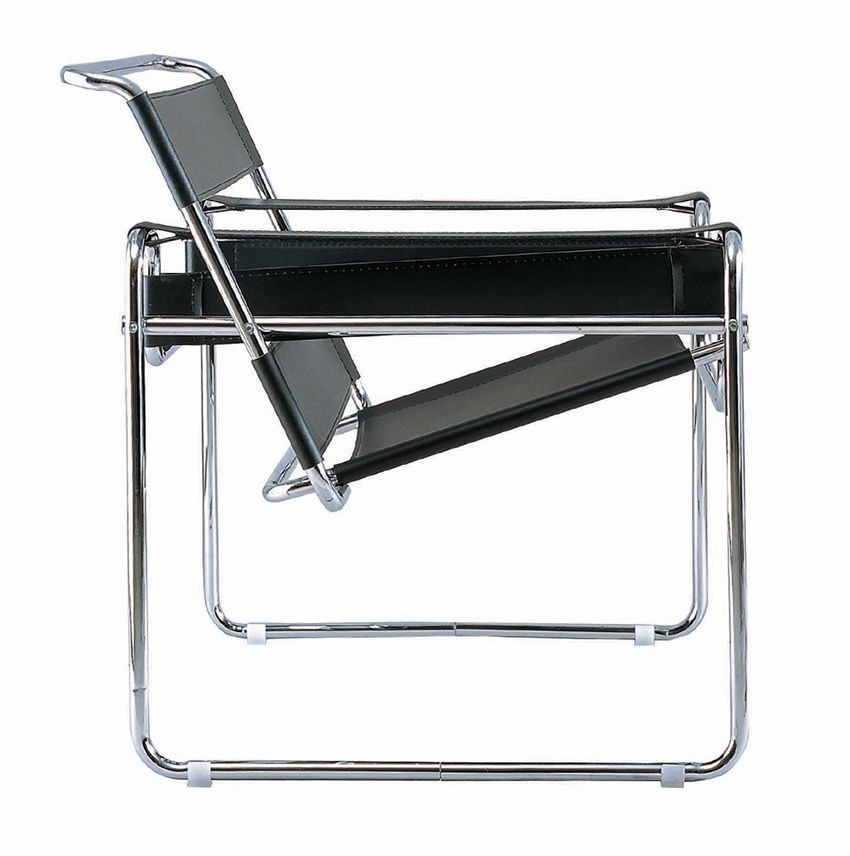
Charles & Ray Eames – Plastic Chair – 1950
The result of several years of experimentation, the Plastic Chair was born in 1948, a chair destined to be very successful thanks to the foresight of its designers. The innovation, by Charles and Ray Eames, consisted in the conception of a body that enveloped the shapes of its user, ensuring a good level of comfort. But the real novelty was represented by the multifunctional aspect of the chair: in fact, the standard seat could be combined with numerous types of “base” capable of ensuring different positions for the user. Made of fiberglass, the chair lent itself to industrial mass production and was pleasant to the touch and aesthetically valuable. Designed to be accessible to all but of excellent quality furniture, Plastic Chairs is still used in residential, public and service contexts, thanks to its versatility and adaptability.
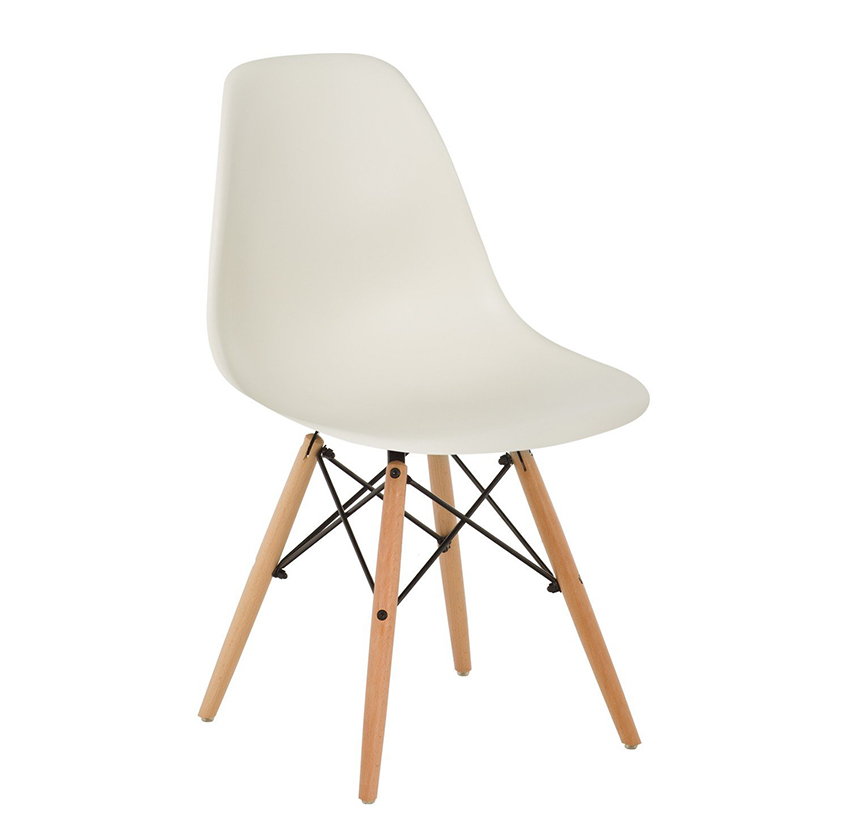
Gio Ponti – Super light – 1957
As can be deduced from the name, it is a very light seat that can be easily moved. Made by Gio Ponti for Cassina, it features a frame made entirely of wood and seats available in woven straw and upholstered fabric variants. Emblem of simplicity and harmony, the chair is characterized by legs with a triangular section and an angular backrest. The lightness of the structure blends with the solidity of the beech wood seat, guaranteeing modern and essential functionality and aesthetics. Having become a real must-have in any environment, the Superleggera is still produced by the Lombard parent company, still preserving the craftsmanship of the past.
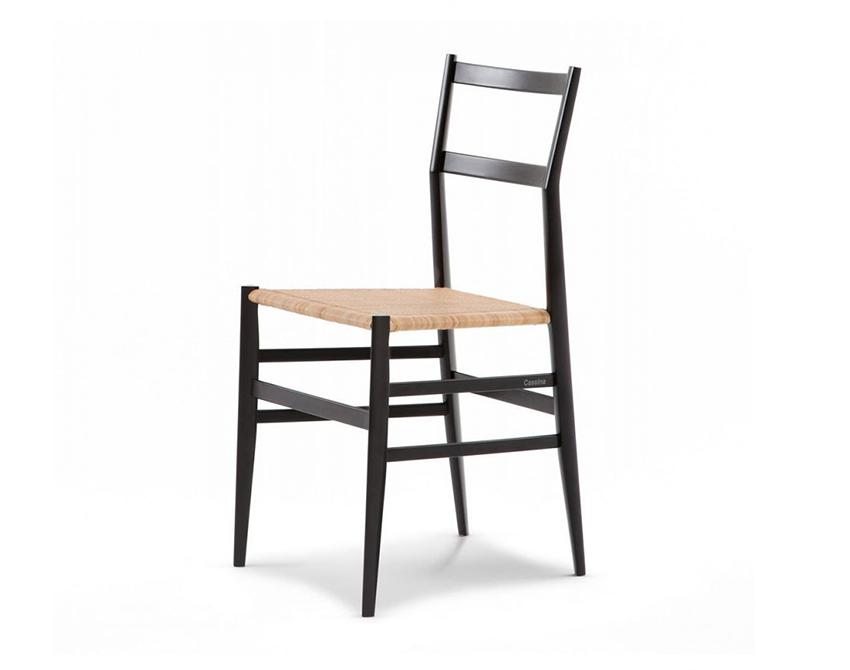
Eero Saarinen – Tulip – 1957
The seat is distinguished by its particular flower stem shape, originating from the intention of its creator to create a chair consisting of a single body and without legs. However, the Tulip Chair, produced by Knoll, was created through the assembly of a metal base, at the time more resistant than plastic, and a seat in elastic material. The shell could be presented with or without a textile covering. Its particular and almost futuristic appearance has made this furniture an icon of style to the point that in 1966 it was used for the filming of the Star Trek television series. Unconventional and unique, blending flexibility and solidity, it has inspired many artists and exponents of the sector.
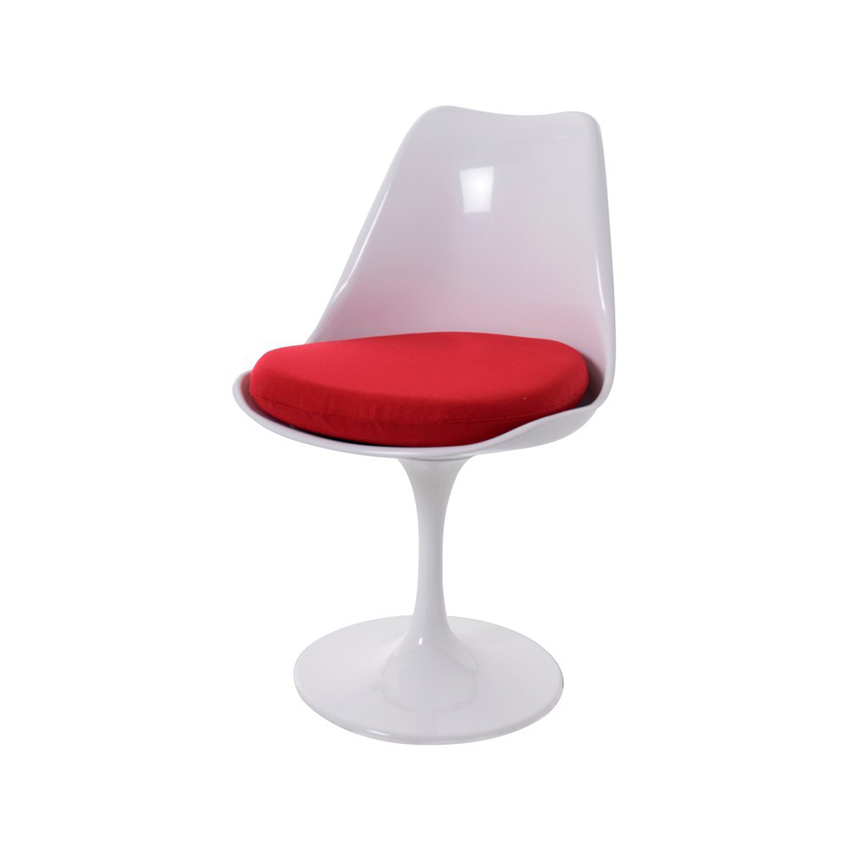
Verner Panton – Panton Chair – 1960
Originating from the collaboration between the designer Verner Panton and the famous company Vitra, the particularity of this chair consists in the world record of furniture consisting of a single shell in plastic material. Produced in series, this iconic seat is characterized by a soft and flexible silhouette that makes it very comfortable and recognizable on the market, in fact it has often been awarded and exhibited in world-famous museums. In addition, the chair is stackable and impact resistant. Over the years, the chair has gone through variable stages in its production, soon becoming an icon thanks to its strong aesthetic impact. Today it is still widely produced because it is in demand on the market for its versatility of use, both indoors and outdoors.
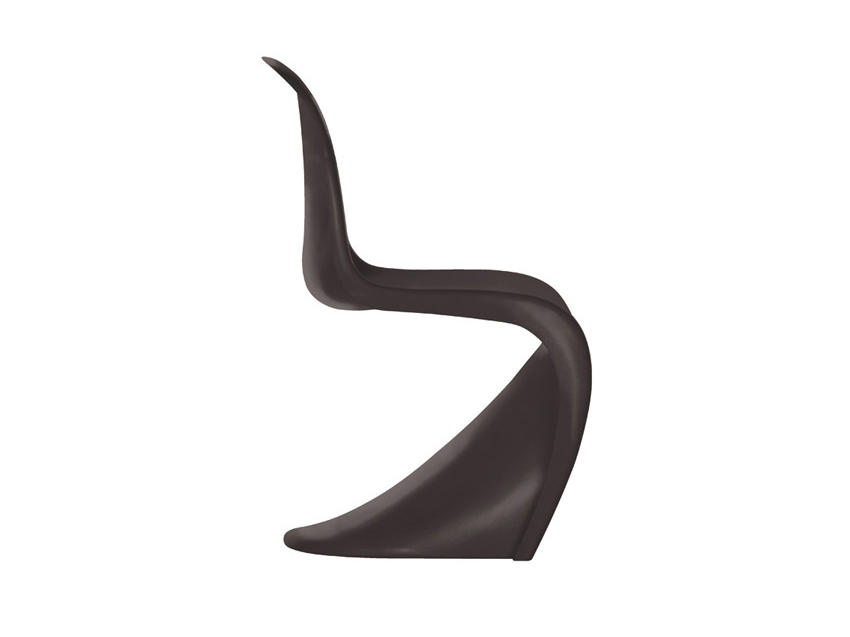
Giandomenico Belotti – Spaghetti Chair – 1979
Wise combination of Made in Italy craftsmanship and innovative modernity, the Spaghetti Chair asserts itself as a rigorous seat with universal beauty. Soon, the seat, the work of Giandomenico Belotti, was noticed and appreciated overseas, becoming one of the iconic pieces exhibited at the MoMA in New York. The backrest and seat are made of a PVC rod, wrapped on a steel structure and the result is a minimal piece of furniture and light to the eye. The chair is the “mother” piece of a collection of low stools, high stools and armchairs that are inspired by the Spaghetti Chair and through the subtraction of elements or their modification they find your own sense of being.
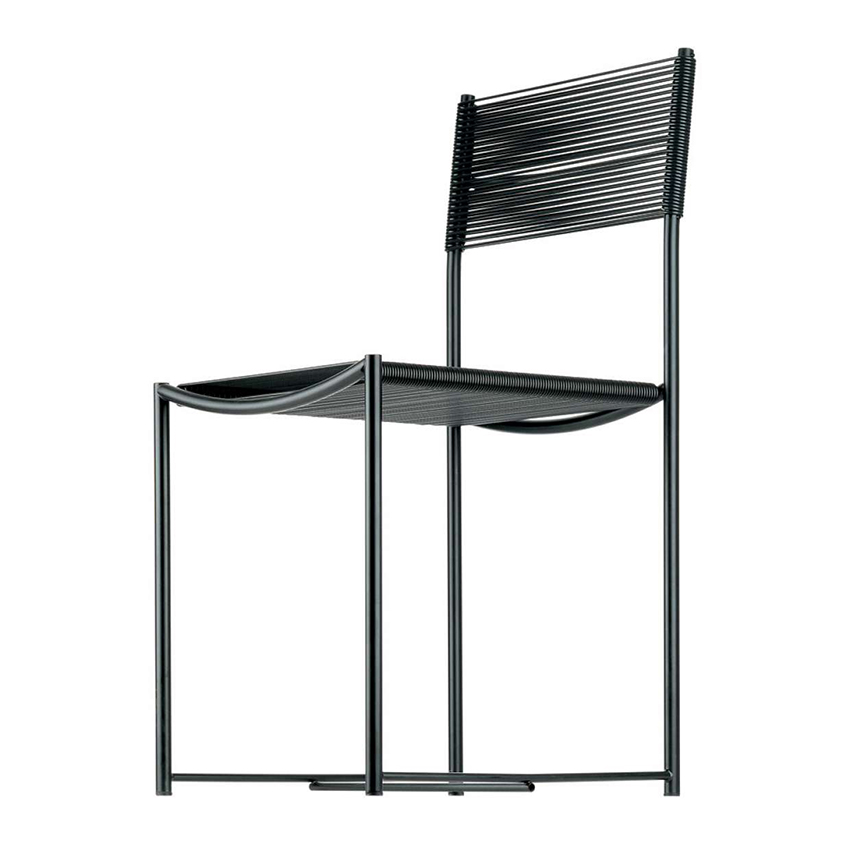
Philippe Starck – Louis Ghost – 2002
Born from the idea of reinterpreting the antique pieces of furniture from the court of Louis XV in a contemporary way, the Louis Ghost breaks down the rules of traditional design, entering on tiptoe and with refined sobriety. Conceived as a seat designed to surprise and amaze the observer, it is sober and minimal, in contrast to the rich and articulated guidelines of its model. Despite the transparency and apparent fragility of the material, the chair is resistant and sturdy, suitable for any type of environment, both indoor and outdoor. Produced in a single mold for Kartell, this piece of furniture will soon be the object of the desire of lovers of minimalist rigor and pure geometry, becoming an international icon of Made in Italy.
